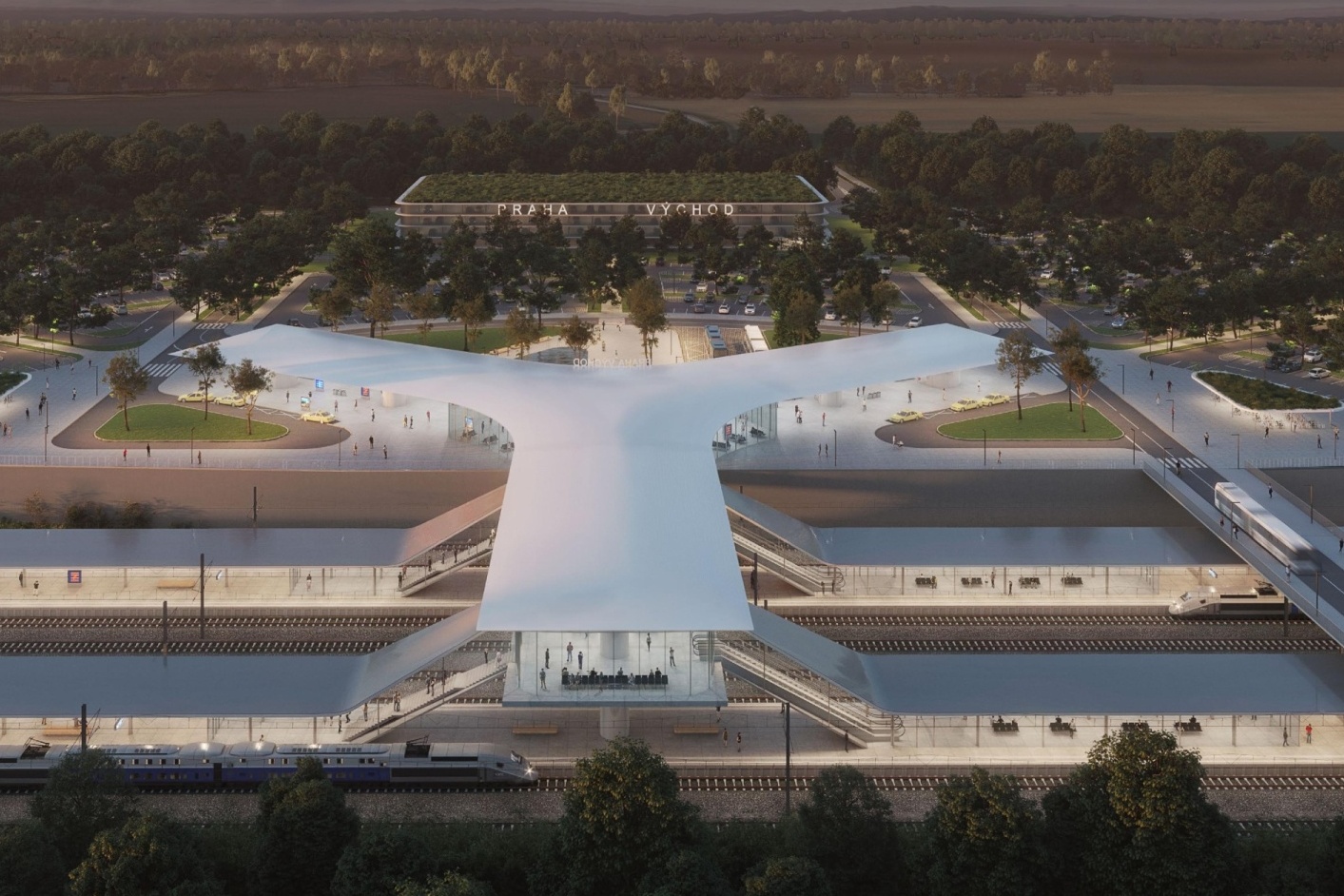 The Czech rail infrastructure manager, Správa železnic, announced that AREP Architects – monom is the winner of the open architectural and urban planning competition for the Jihlava high-speed terminal. Out of the total number of 25 architectural studios that participated in the competition, the design of the French-Czech association was selected. The construction of the terminal is scheduled to be launched in 2029.
The Czech rail infrastructure manager, Správa železnic, announced that AREP Architects – monom is the winner of the open architectural and urban planning competition for the Jihlava high-speed terminal. Out of the total number of 25 architectural studios that participated in the competition, the design of the French-Czech association was selected. The construction of the terminal is scheduled to be launched in 2029.
The jury for the winning proposal appreciated the way in which the new transport hub integrates into the landscape and takes into account important landscape features in the wider area. From a traffic point of view, she then highlighted the clarity of all transfer links in the terminal and the very well-organized bus station.
Given the expected capacity of the terminal of up to 6,000 passengers per day, i.e. up to 300 passengers per hour at peak times, the jury appreciated the short transfer routes between individual modes of transport, which the proposal effectively solves.
“After Prague East and Roudnice nad Labem, the Jihlava high-speed terminal is already the third in a row that knows its future form. As in previous cases, the Jihlava terminal will also be a transfer hub between high-speed rail, local public transport and other modes of transport. Thanks to this, fast connections will increase the availability of job opportunities and education and at the same time support life in individual regions, which will fundamentally change the general perception of concepts such as distance or countryside,” the Minister of Transport Martin Kupka said.
The competition focused on the integration of the terminal into the landscape and the development of the public space, as well as the railway flyover over the D1 motorway and related buildings.The Jihlava terminal will serve as a key interchange between the high-speed line (VRT) and public and personal transport in Vysočina.Therefore, the main criteria for selecting the winning design were the quality of the urban, transport, landscape and environmental solution as well as the economic efficiency of the investment costs.
“The new terminal will support both long-distance journeys and daily commuting within the concept of fast rail connections.
In addition, the integration of VRT into the conventional railway network and the effort to achieve climate neutrality show that it is a project of far-reaching importance not only for Vysočina, but for the entire Czech Republic,” said the Director General of the Railway Administration Jiří Svoboda.
Thanks to the location of the new terminal near the regional capital and the D1 highway, it can be assumed that after completion, there will be significant development of the surrounding area, which will be reflected in the growing economic performance of the entire region. Up to 118 trains pass through the Jihlava terminal daily. Twice an hour, a high-speed train stops here, which takes 52 minutes to Prague, and only 36 minutes to Brno.
“In our view, the terminal wants to be minimalist and at the same time an ecological landmark with a low energy footprint.It adapts to the topography of the site and uses the existing infrastructure to limit additional construction,” explained architect Igor Hobza, representative of the winning association AREP Architects – monom.
Share on:



